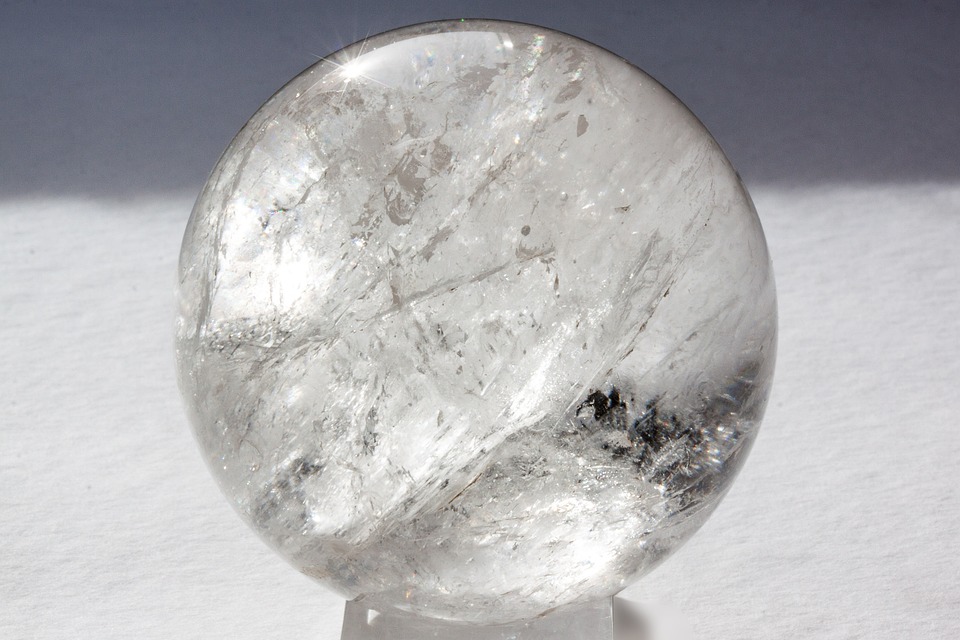Silicone Monomer - the Core of High Polymer Materials
Release Time: 2022-11-10 14:37:14
Silicone Monomer - the Core of High Polymer Materials

A silicone crystal (cited from: https://pixabay.com/photos/bullet-crystal-ball-pure-quartz-265334/)
Cover photo cited from: https://pixabay.com/photos/acetoxy-fixing-sealing-silicone-88218
It is impossible to develop high polymer materials without the corresponding development of monomer technologies. It is due to the raw materials to organic silicone materials are organic silicone monomers. The features of organic silicone industries are the collective production and separated processing. There, the production of silicone monomers takes an important role in organic silicone industry and the production level directly reflects the development level of organic silicone industry. The collective production is due to it can be much more beneficial from the advanced technologies and the mass escalation. The relative investment and marginal costs will be decreased largely. There are thousands of silicone monomers but only few of them have industrial values. Industrial level silicone monomers usually have four types- chlorosilane, cyclosiloxane, alkoxysilane and acyloxysilane. The first two types are utmost important ones.
Introduction to Chlorosilanes
There are mainly five ways to produce chlorosilanes, while the common method is the direct synthesis method.
Today’s main silicone monomer producers use fluidized bed direct synthesis method. It refers to reacting silicone powders with halogenated hydrocarbon in a higher reactive temperature with adding relative agents to get the final alkyl halosilane mixture. The chemical equation is as below:
For this method, the raw materials are mainly metallurgical grade silicon metal and methyl chloride. The size of silicon metal powder is highly related to the reaction, the powder should be in a size between 30~350μm.
In many years, scientists are dedicated to research on the synthesis of methyl monomers. The key points include increasing the corresponding purity, reducing the energy cost and keeping long-term stable running. Therefore, researchers also take much effort on improving the corresponding agent system. Besides the main copper powders, some other agents are also added such as zincs, aluminums and other matters.
In some advanced companies, the production levels of methyl chlorosilane are reaching 70000t per fluidized bed annually and each reaction time could be lasted for 700 to 1000 hours; the bed could work maximum 8000 hours annually; 96% of methyl chlorides are used effectively. The reaction temperature is between 280℃ to 320℃ and most time the temperature is between 280~300℃; The designed reaction pressure is 5 bar while it is actually 1.2~2 bar.
Chlorosilane is not only the raw material to silicone rubber, silicone resin and silicone oil, but also could be used to a series of organic silicone compounds.
Introduction to Cyclosiloxanes
Cyclosiloxane could be made through hydrolyzing chlorosilanes who have bifunctional groups, but if one wants to get linear polysiloxane which has a big molecular quantity (over 1000), the requirement on the monomer will be pretty high. Especially the methyl trichlorosilane’s ratio must be way less than 1:10000 or there will be side chains or even other compounds. It is difficult to produce dimethyldichlorosilane due to the boiling points of methyl trichlorosilane and dimethyldichlorosilane only have a distance of 4℃.
It is in order to overcome this difficulty in industry; people start to use cyclosiloxane monomers to produce linear polysiloxanes. Among all cyclosiloxane monomers, only D3, D4 and D5 have commercial values and they are widely produced and applied in industry. D3 and D5 are used as the monomers which are to produce linear polysiloxanes. D5 has good compatibility with cosmetic liquids and D5 has good properties like non-toxic, non-smelly, non-greasy and high extensions thus D5 is used as the basic silicone oil for personal care products.
One of the most important synthesis methods of cyclosiloxanes in industry is to hydrolyze dichlorosilane.
It is during the hydrolyzing process to produce mixture of linear or cyclo polysiloxanes, if we add the dimethyldichlorosilane to a large amount of water in 15~20℃, we will get the mixture which contains 0.5% D3, 42% D4, 6.7% D5 and 49.2% others. The final products will be changed according to reaction conditions. In acid environment, it is good to produce more cyclo and linear low polymer products will in alkaline environment, vice versa.
Another important way to produce cyclosiloxanes is the rearrangement of cyclo or linear polydimesiloxanes. It is also the main channel to recycle the organic silicon wastes. The chemical keys will be rearranged to produce cyclo chemicals when heat the linear or cyclo siloxanes to a higher degree. The needed parts could be collected through distillation.
Introduction to Other Silane Monomers
Besides the two main silanes mentioned above, there are other organic silicone monomers produced in industry like alkoxysilane, silanol and silylamine monomer.
The chemical characteristics of alkoxysilane are more stable than chlorosilane and could be convenient to be used, stored and transported. Therefore, many people begin to use these chemicals to replace chlorosilanes.
Silanols could be got through hydrolyzing the chlorosilanes. Silanols are usually unstable and will be turned to siloxanes. The Chemical properties of silanols have closed relationship with the structure. Generally, their reactivity will increase when the number of hydroxyls in the silicon atoms increases. The order is R3SiOH<R2Si(OH)2<RSi(OH)3. However, when silicon atoms of silanols are linked to bigger organic functional groups, these silanols will be more stable and could be separated easily.
Silylamines are highly active and are easy to be hydrolyzed to Si-O key. Si-NH2 is usually condensate to Si-NH-Si by itself. Difunctional silylamines are unstable as well.
There are also many other industrial silicone monomers but have less industrial values. To compare with other silicone compounds, silicone monomers are certainly less applied from the perspective of the number of its kinds.
